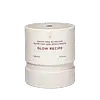What's inside
What's inside
 Key Ingredients
Key Ingredients

 Benefits
Benefits

 Concerns
Concerns

 Ingredients Side-by-side
Ingredients Side-by-side

Water
Skin ConditioningNiacinamide
SmoothingDimethyl Isosorbide
SolventSqualane
EmollientCetyl Alcohol
EmollientCaprylic/Capric Triglyceride
MaskingC12-16 Alcohols
EmollientEthoxydiglycol
HumectantSodium Hyaluronate
HumectantPropanediol
SolventIsopentyldiol
HumectantIsopropyl Palmitate
EmollientButylene Glycol
HumectantSimmondsia Chinensis Seed Oil
EmollientBetaine
HumectantBakuchiol
AntimicrobialCucumis Sativus Fruit Extract
EmollientGlycerin
HumectantGlyceryl Stearate Se
EmulsifyingPhenoxyethanol
PreservativePalmitic Acid
EmollientHydrogenated Lecithin
EmulsifyingLecithin
EmollientBacillus
Skin ConditioningEthylhexylglycerin
Skin ConditioningRaphanus Sativus Sprout Extract
AntioxidantMagnesium Aspartate
Skin ConditioningZinc Gluconate
Skin ConditioningMaltodextrin
AbsorbentCryptomeria Japonica Bud Extract
Skin Conditioning1,2-Hexanediol
Skin ConditioningCaprylyl Glycol
EmollientCitric Acid
BufferingSh-Oligopeptide-1
Skin ConditioningSh-Oligopeptide-2
Skin ConditioningSh-Polypeptide-1
Skin ConditioningSh-Polypeptide-11
Sh-Polypeptide-9
Skin ConditioningAcetyl Glutamine
Skin ConditioningCopper Gluconate
Skin ConditioningWater, Niacinamide, Dimethyl Isosorbide, Squalane, Cetyl Alcohol, Caprylic/Capric Triglyceride, C12-16 Alcohols, Ethoxydiglycol, Sodium Hyaluronate, Propanediol, Isopentyldiol, Isopropyl Palmitate, Butylene Glycol, Simmondsia Chinensis Seed Oil, Betaine, Bakuchiol, Cucumis Sativus Fruit Extract, Glycerin, Glyceryl Stearate Se, Phenoxyethanol, Palmitic Acid, Hydrogenated Lecithin, Lecithin, Bacillus, Ethylhexylglycerin, Raphanus Sativus Sprout Extract, Magnesium Aspartate, Zinc Gluconate, Maltodextrin, Cryptomeria Japonica Bud Extract, 1,2-Hexanediol, Caprylyl Glycol, Citric Acid, Sh-Oligopeptide-1, Sh-Oligopeptide-2, Sh-Polypeptide-1, Sh-Polypeptide-11, Sh-Polypeptide-9, Acetyl Glutamine, Copper Gluconate
Water
Skin ConditioningPentaerythrityl Tetraethylhexanoate
EmollientGlycerin
HumectantPPG-15 Stearyl Ether
EmollientDimethicone
EmollientButylene Glycol
HumectantDimethicone Crosspolymer
Emulsion StabilisingCaprylyl Glycol
EmollientGlyceryl Behenate
EmollientRetinol
Skin ConditioningSodium Hyaluronate
HumectantAscorbic Acid
AntioxidantAscorbyl Palmitate
AntioxidantHydrolyzed Myrtus Communis Leaf Extract
Skin ProtectingTocopherol
AntioxidantStearyl Alcohol
EmollientIsododecane
EmollientCetearyl Alcohol
EmollientPolysorbate 20
EmulsifyingAllyl Methacrylates Crosspolymer
Emulsion StabilisingBHT
AntioxidantCeteareth-20
CleansingSodium Acryloyldimethyltaurate/Vp Crosspolymer
Emulsion StabilisingPentylene Glycol
Skin ConditioningSodium Polyacrylate
AbsorbentPolyacrylamide
C13-14 Isoparaffin
EmollientLaureth-7
EmulsifyingHydroxyphenyl Propamidobenzoic Acid
Skin ConditioningCaprylhydroxamic Acid
Disodium EDTA
Phenoxyethanol
PreservativeEthylhexylglycerin
Skin ConditioningSodium Hydroxide
BufferingParfum
MaskingWater, Pentaerythrityl Tetraethylhexanoate, Glycerin, PPG-15 Stearyl Ether, Dimethicone, Butylene Glycol, Dimethicone Crosspolymer, Caprylyl Glycol, Glyceryl Behenate, Retinol, Sodium Hyaluronate, Ascorbic Acid, Ascorbyl Palmitate, Hydrolyzed Myrtus Communis Leaf Extract, Tocopherol, Stearyl Alcohol, Isododecane, Cetearyl Alcohol, Polysorbate 20, Allyl Methacrylates Crosspolymer, BHT, Ceteareth-20, Sodium Acryloyldimethyltaurate/Vp Crosspolymer, Pentylene Glycol, Sodium Polyacrylate, Polyacrylamide, C13-14 Isoparaffin, Laureth-7, Hydroxyphenyl Propamidobenzoic Acid, Caprylhydroxamic Acid, Disodium EDTA, Phenoxyethanol, Ethylhexylglycerin, Sodium Hydroxide, Parfum
 Reviews
Reviews

Ingredients Explained
These ingredients are found in both products.
Ingredients higher up in an ingredient list are typically present in a larger amount.
Butylene Glycol (or BG) is used within cosmetic products for a few different reasons:
Overall, Butylene Glycol is a safe and well-rounded ingredient that works well with other ingredients.
Though this ingredient works well with most skin types, some people with sensitive skin may experience a reaction such as allergic rashes, closed comedones, or itchiness.
Learn more about Butylene GlycolCaprylyl Glycol is a humectant and emollient, meaning it attracts and preserves moisture.
It is a common ingredient in many products, especially those designed to hydrate skin. The primary benefits are retaining moisture, skin softening, and promoting a healthy skin barrier.
Though Caprylyl Glycol is an alcohol derived from fatty acids, it is not the kind that can dry out skin.
This ingredient is also used as a preservative to extend the life of products. It has slight antimicrobial properties.
Learn more about Caprylyl GlycolEthylhexylglycerin (we can't pronounce this either) is commonly used as a preservative and skin softener. It is derived from glyceryl.
You might see Ethylhexylglycerin often paired with other preservatives such as phenoxyethanol. Ethylhexylglycerin has been found to increase the effectiveness of these other preservatives.
Glycerin is already naturally found in your skin. It helps moisturize and protect your skin.
A study from 2016 found glycerin to be more effective as a humectant than AHAs and hyaluronic acid.
As a humectant, it helps the skin stay hydrated by pulling moisture to your skin. The low molecular weight of glycerin allows it to pull moisture into the deeper layers of your skin.
Hydrated skin improves your skin barrier; Your skin barrier helps protect against irritants and bacteria.
Glycerin has also been found to have antimicrobial and antiviral properties. Due to these properties, glycerin is often used in wound and burn treatments.
In cosmetics, glycerin is usually derived from plants such as soybean or palm. However, it can also be sourced from animals, such as tallow or animal fat.
This ingredient is organic, colorless, odorless, and non-toxic.
Glycerin is the name for this ingredient in American English. British English uses Glycerol/Glycerine.
Learn more about GlycerinPhenoxyethanol is a preservative that has germicide, antimicrobial, and aromatic properties. Studies show that phenoxyethanol can prevent microbial growth. By itself, it has a scent that is similar to that of a rose.
It's often used in formulations along with Caprylyl Glycol to preserve the shelf life of products.
Sodium Hyaluronate is hyaluronic acid's salt form. It is commonly derived from the sodium salt of hyaluronic acid.
Like hyaluronic acid, it is great at holding water and acts as a humectant. This makes it a great skin hydrating ingredient.
Sodium Hyaluronate is naturally occurring in our bodies and is mostly found in eye fluid and joints.
These are some other common types of Hyaluronic Acid:
Learn more about Sodium HyaluronateWater. It's the most common cosmetic ingredient of all. You'll usually see it at the top of ingredient lists, meaning that it makes up the largest part of the product.
So why is it so popular? Water most often acts as a solvent - this means that it helps dissolve other ingredients into the formulation.
You'll also recognize water as that liquid we all need to stay alive. If you see this, drink a glass of water. Stay hydrated!
Learn more about Water